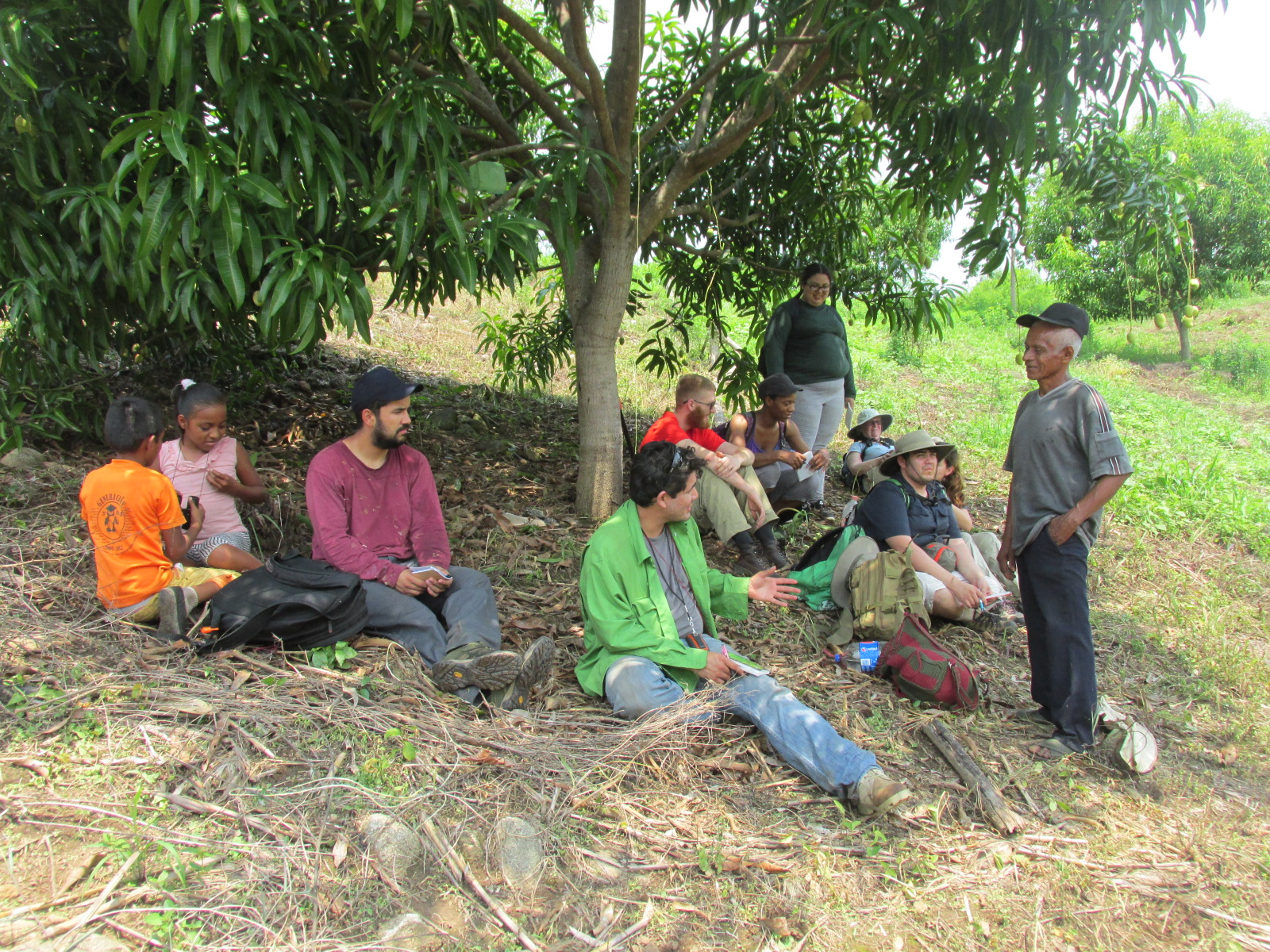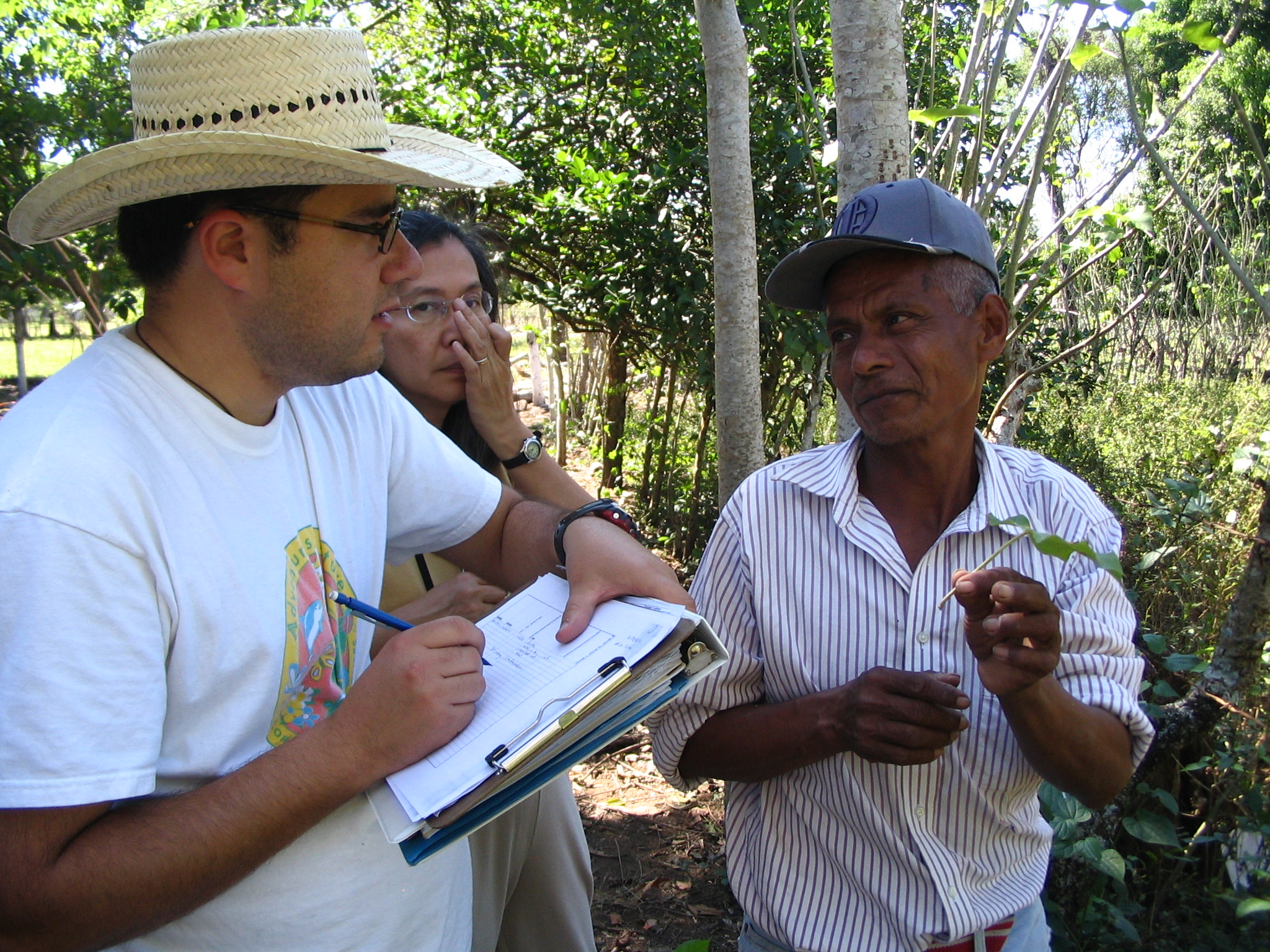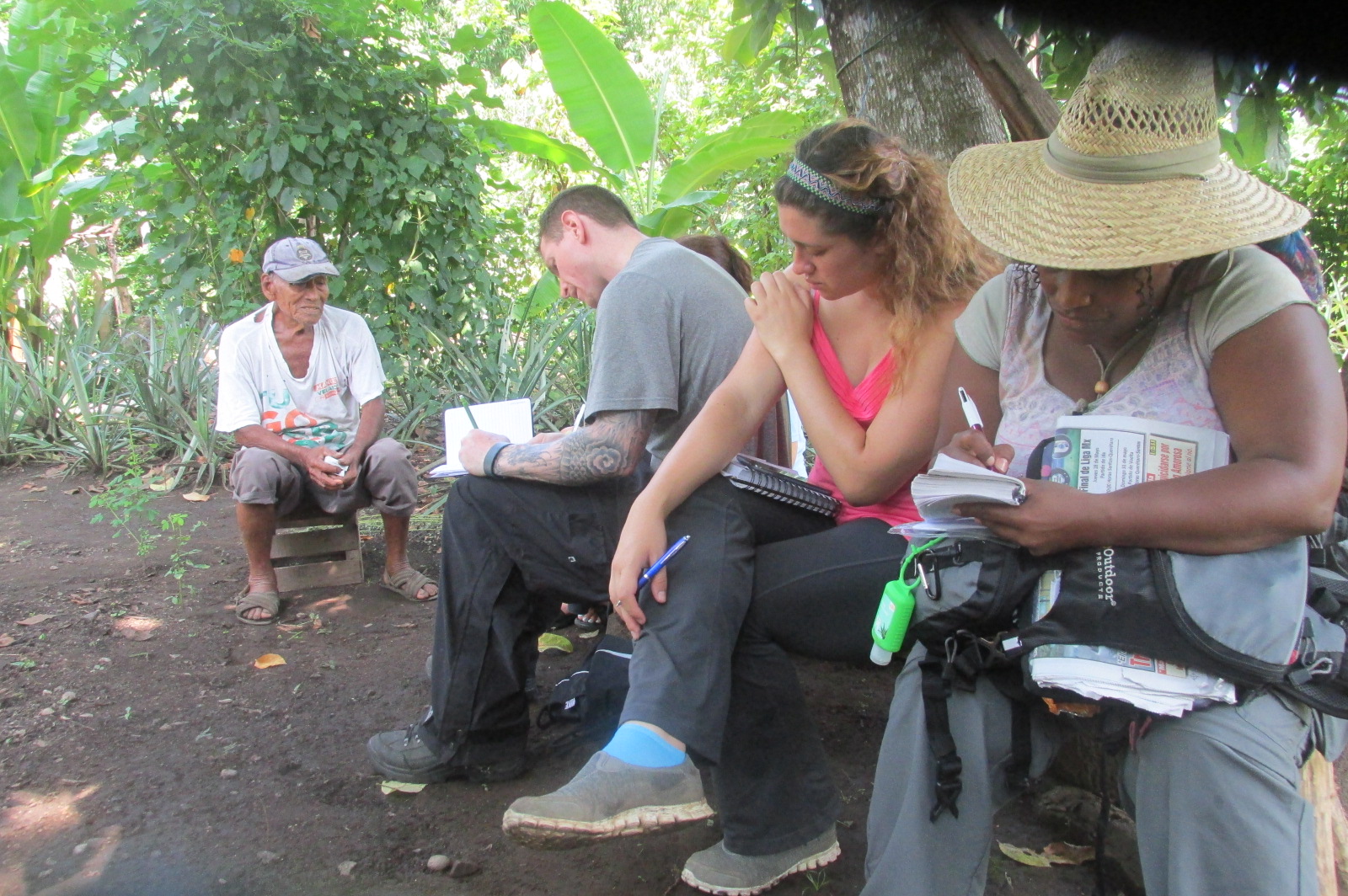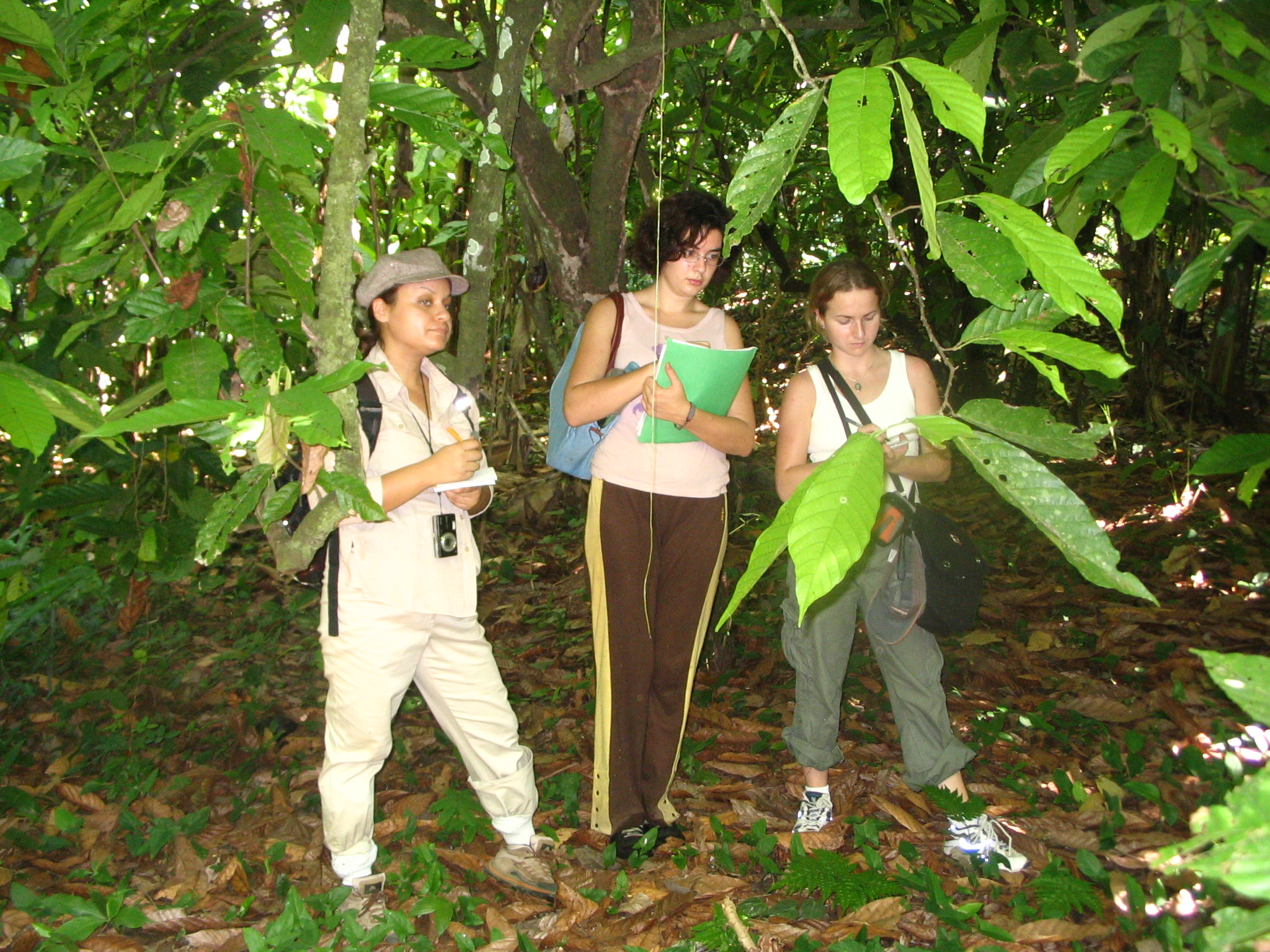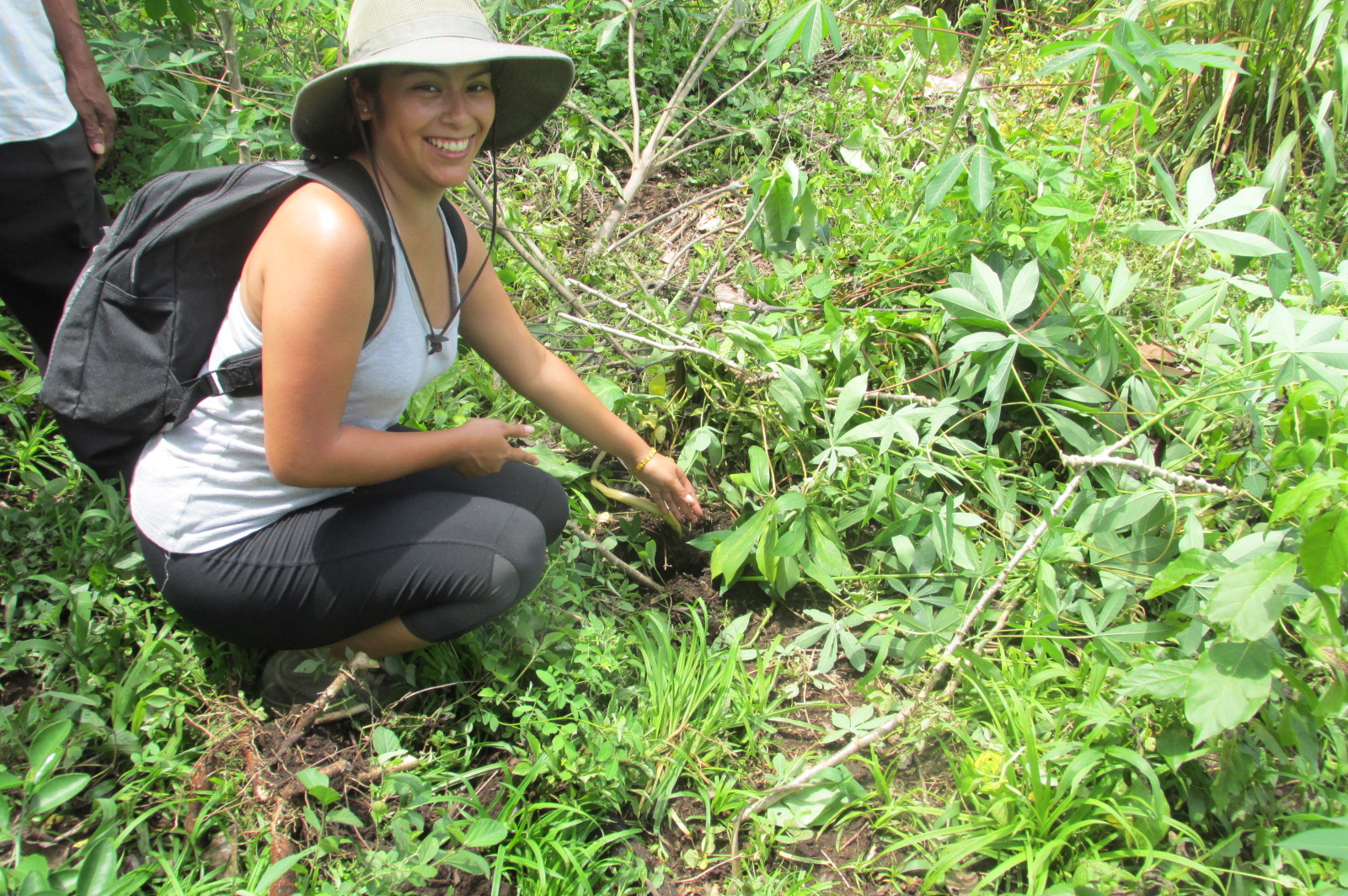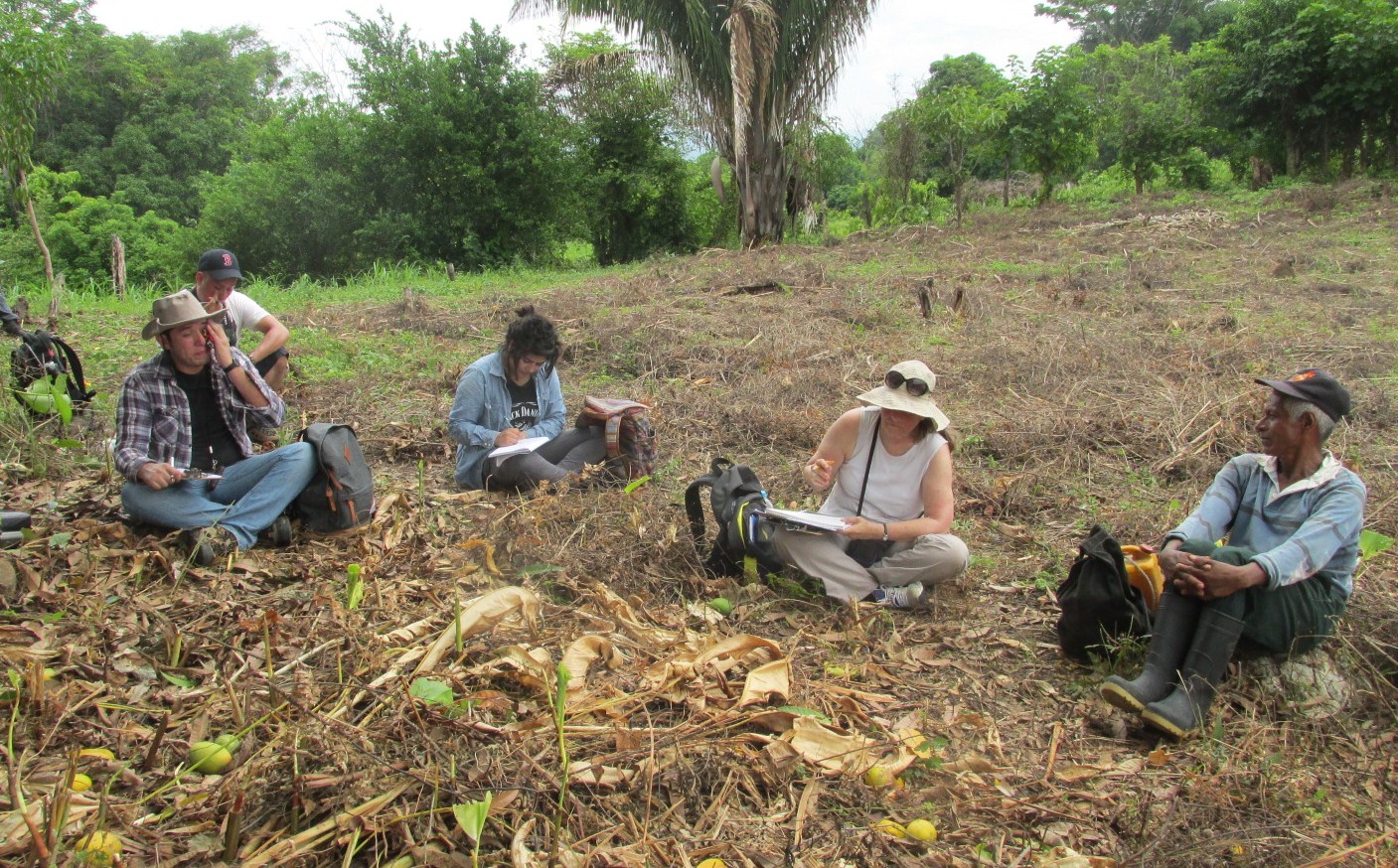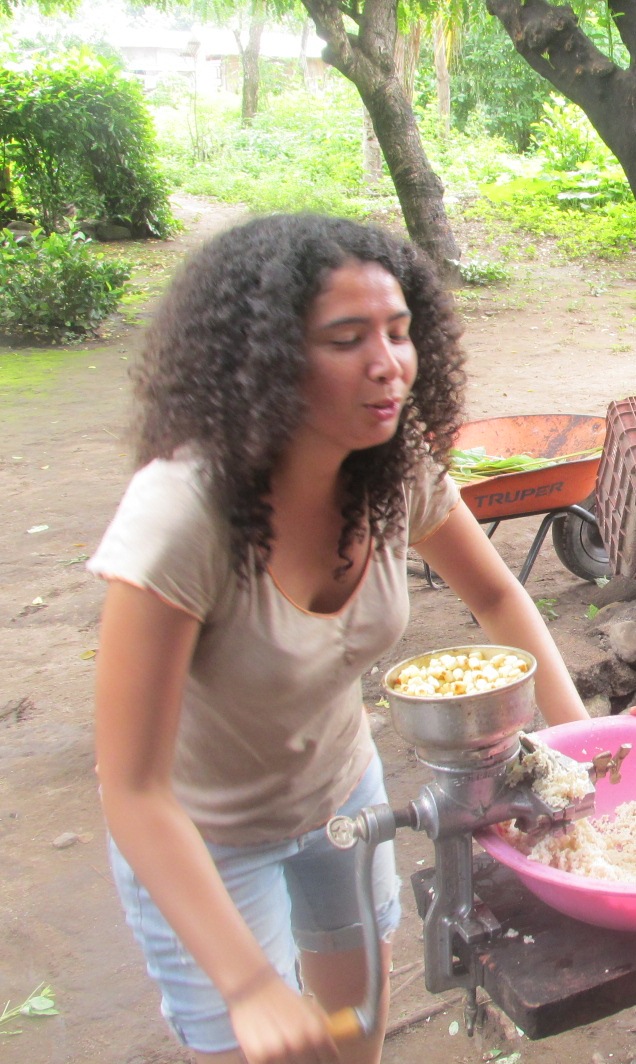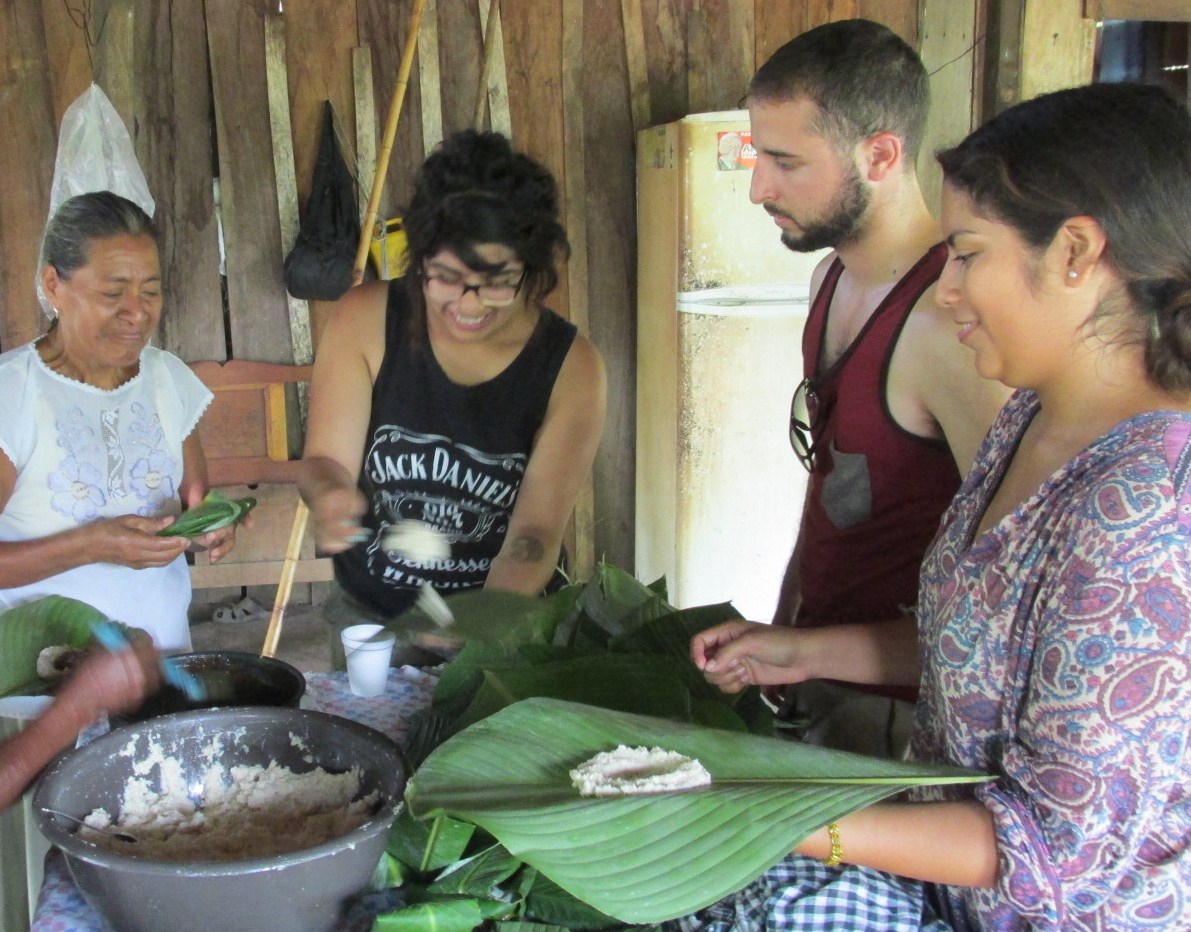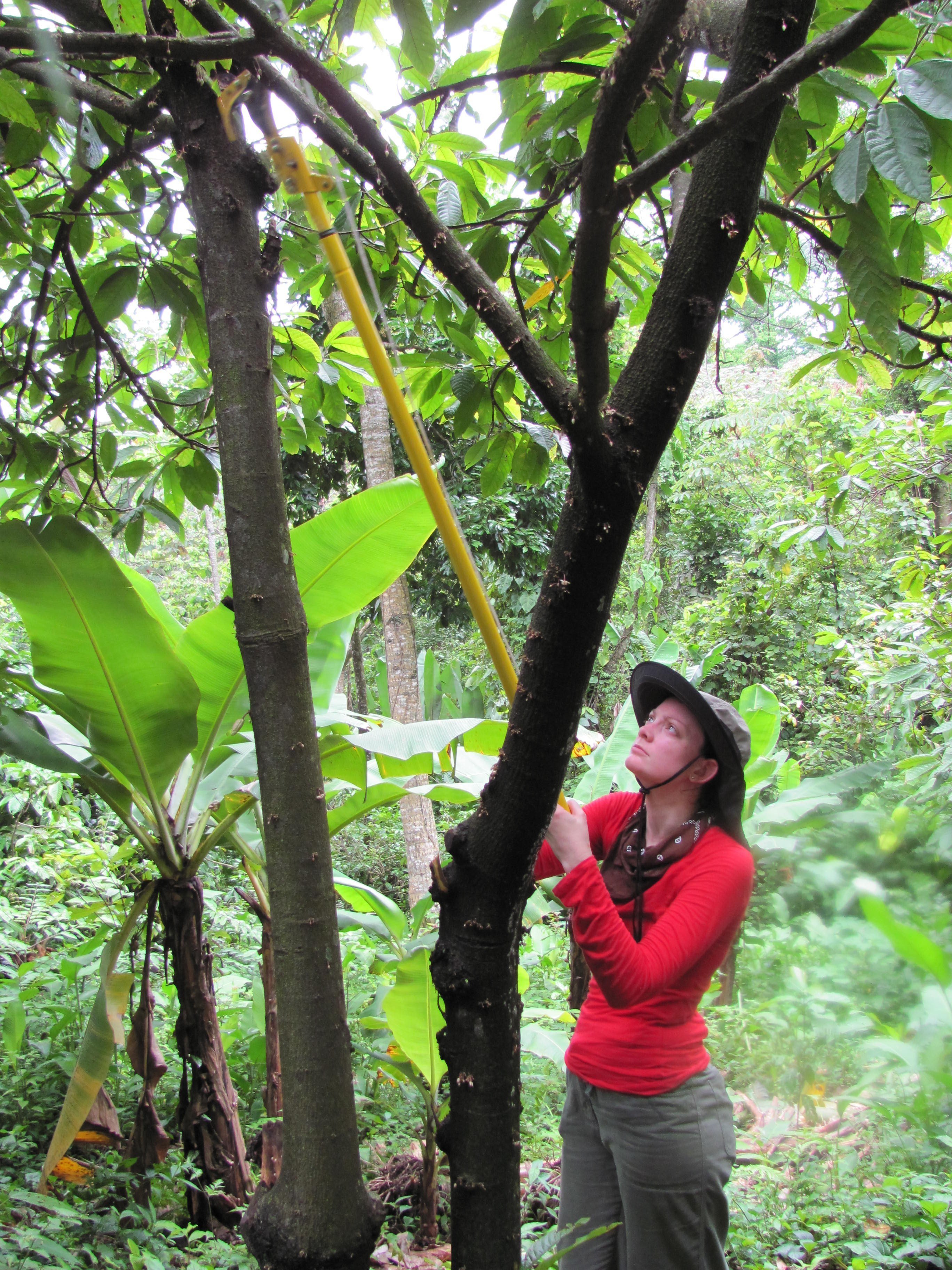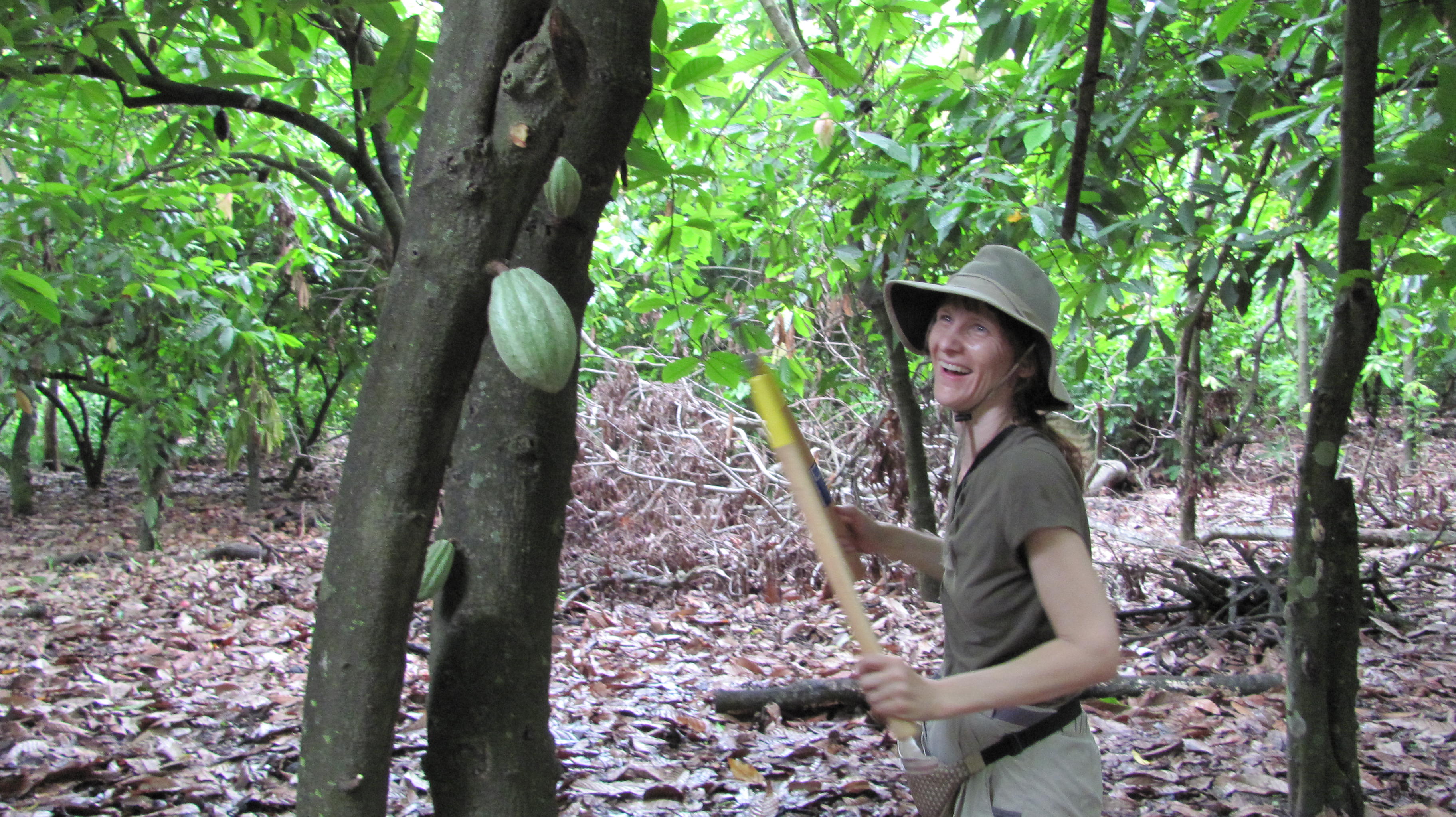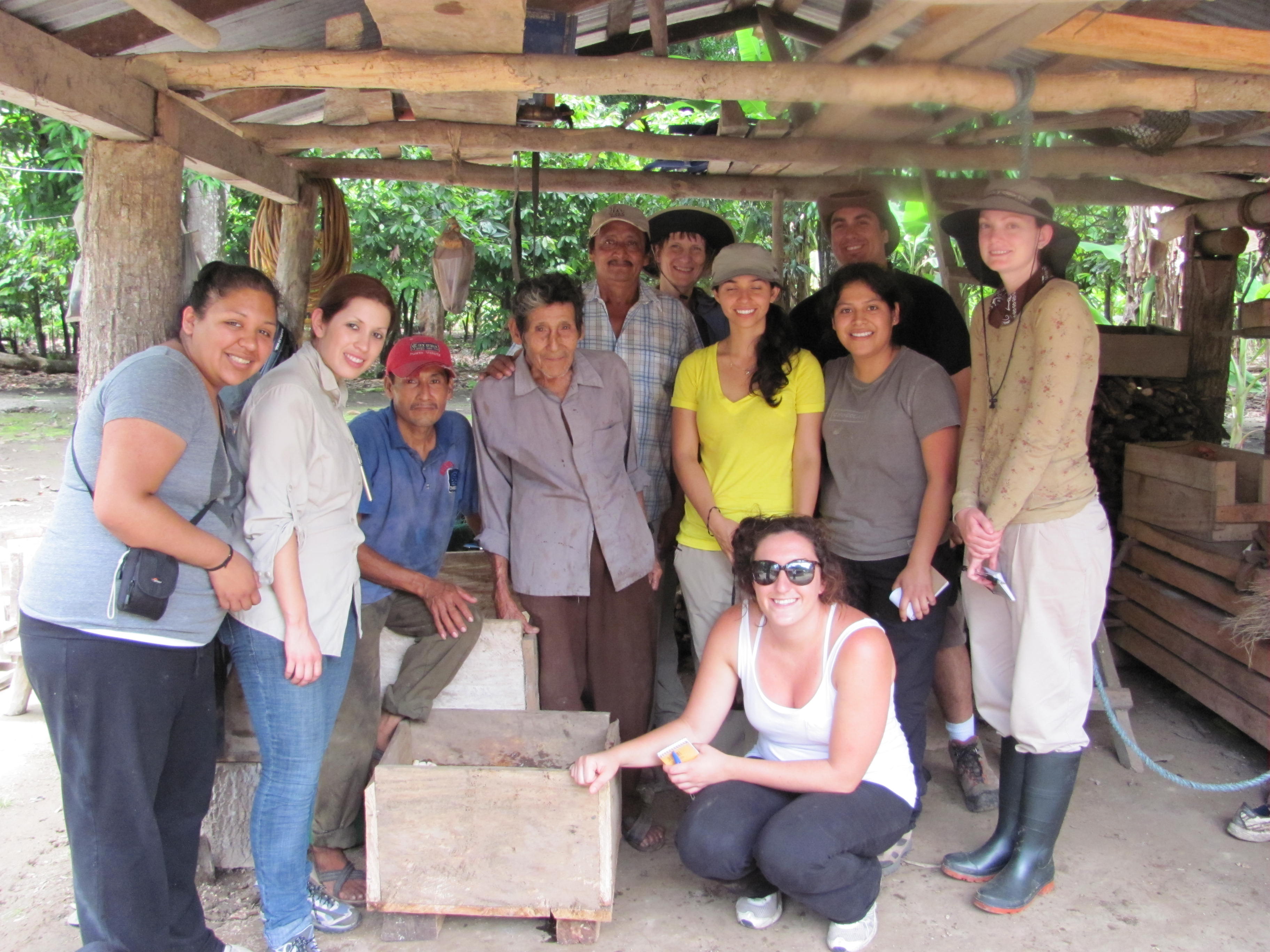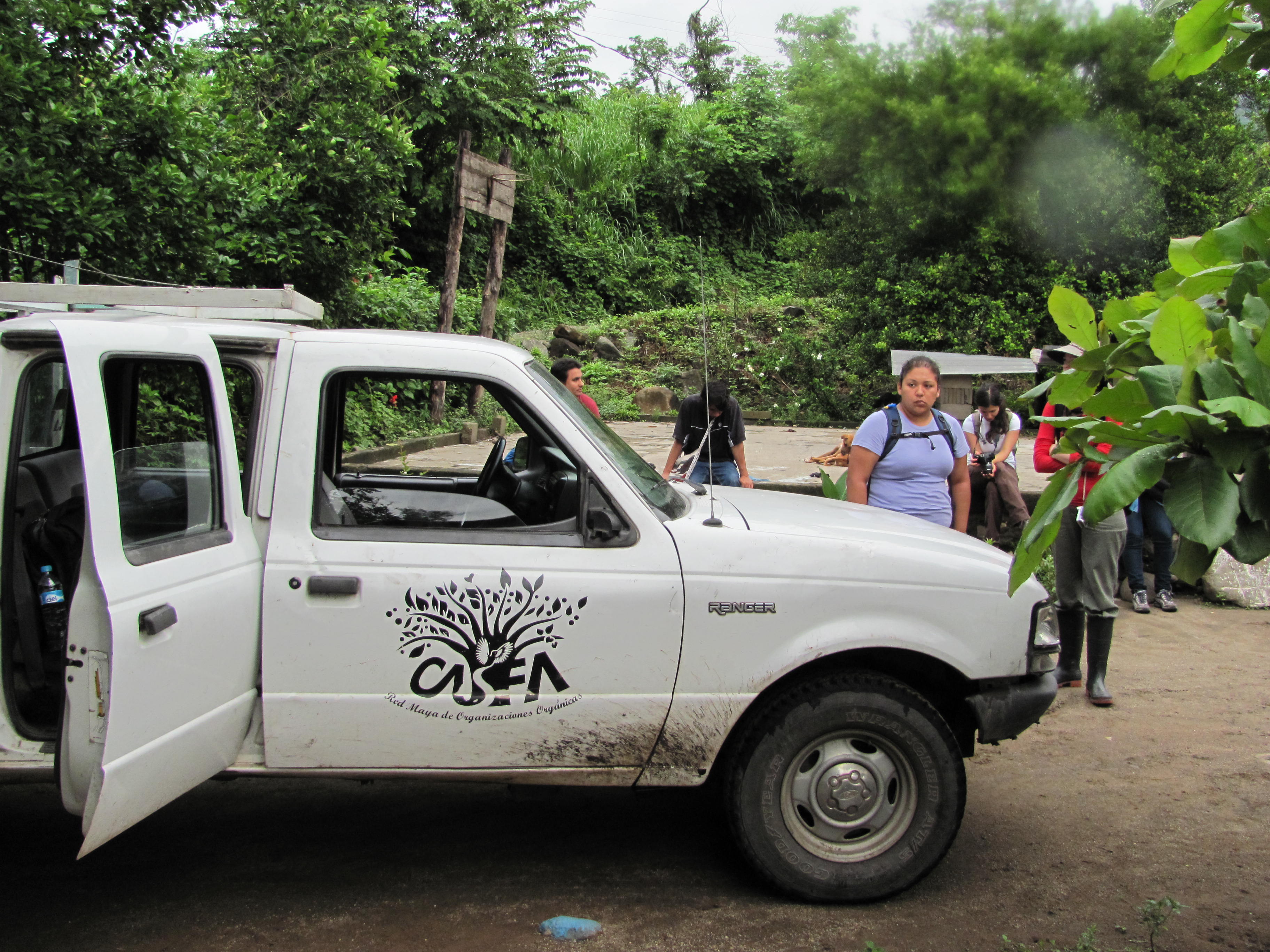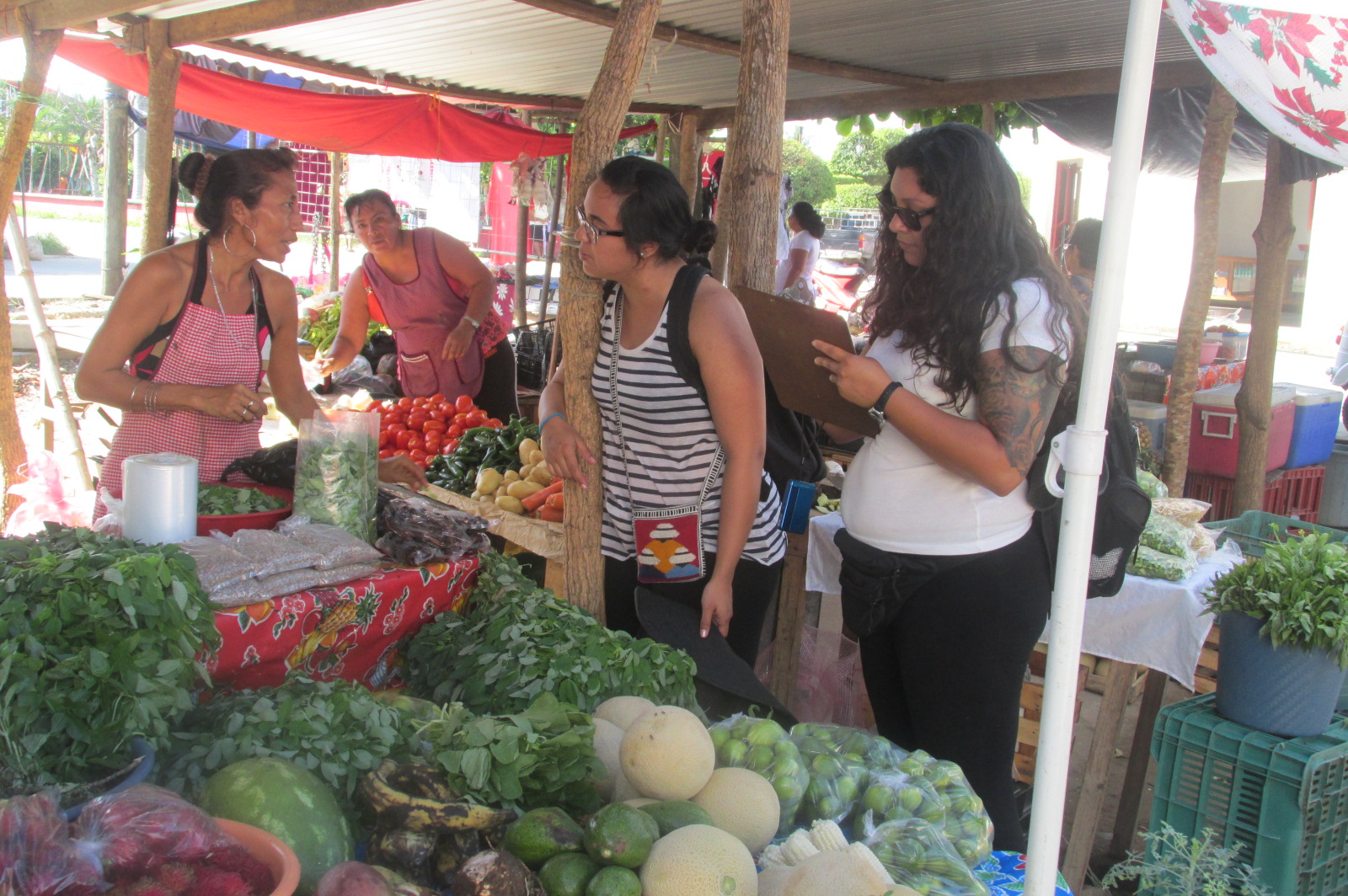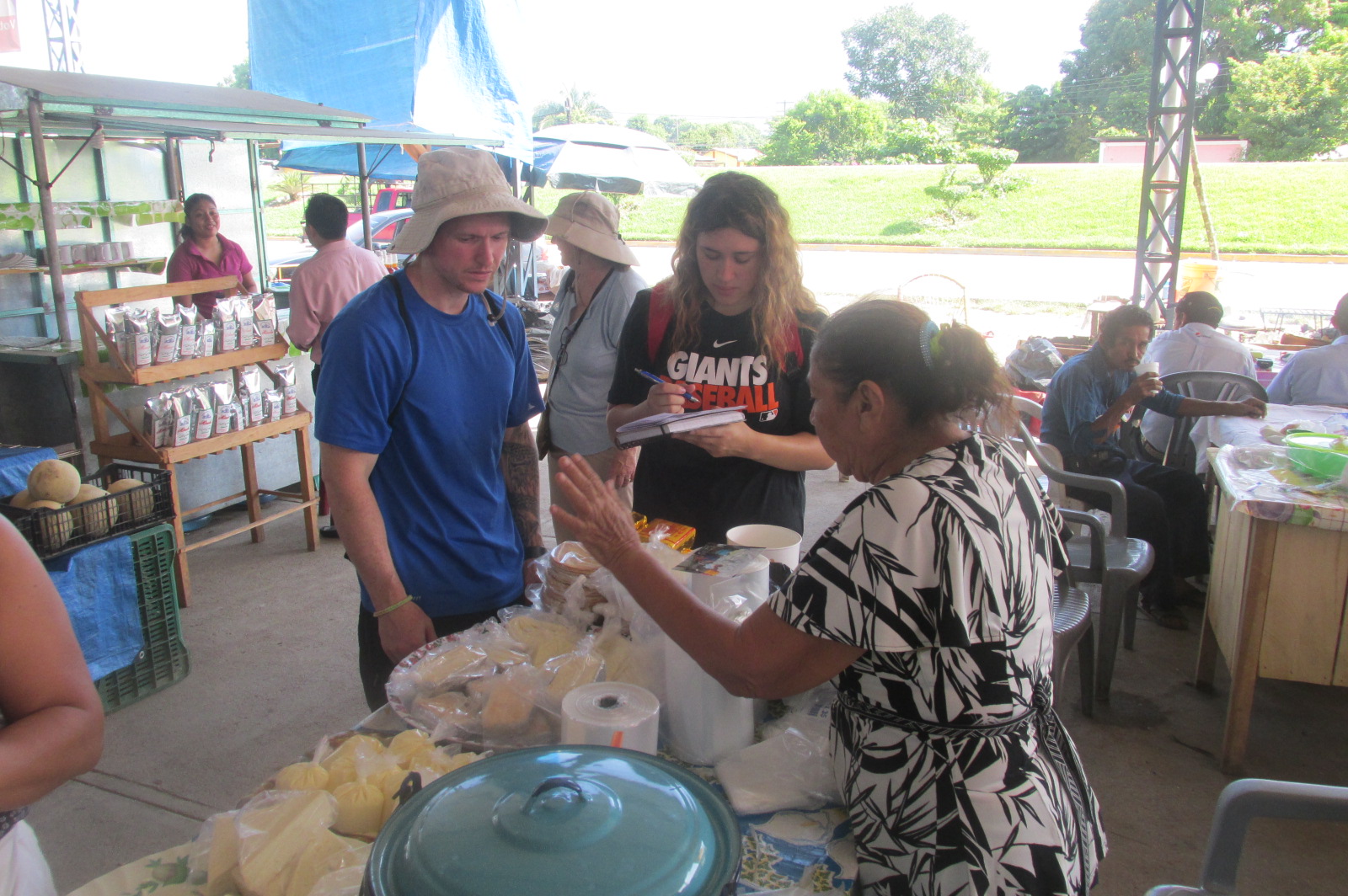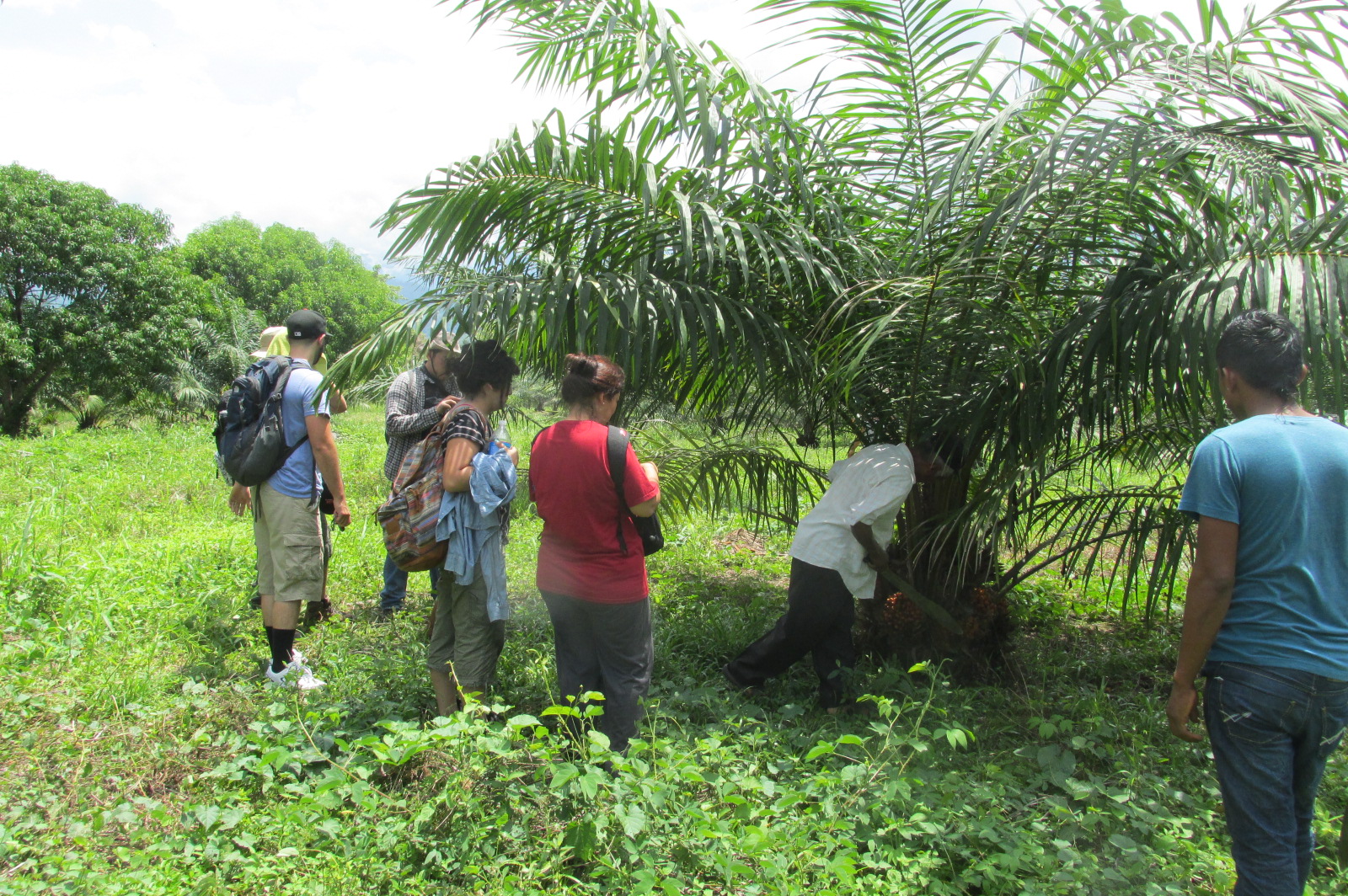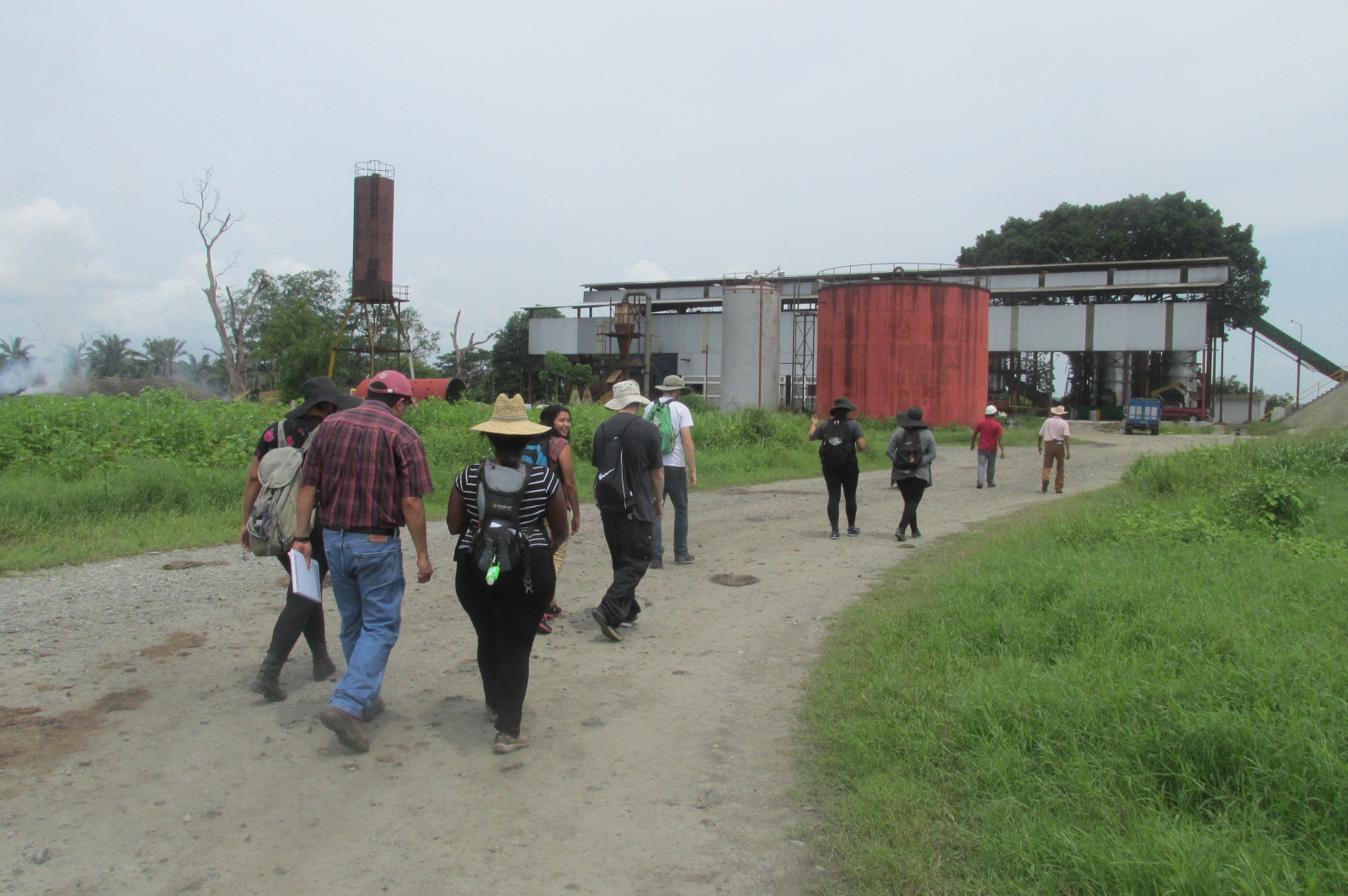Chiapas
Latest News
CSUDH Ethnobotany and Ethnoecology Filed courses in Chiapas, Mexico, 2000-2018
Between 2000 and 2018 fourteen field classes have been taught with over 70 students participating. Each year the course has a different focus, but in each case, students are introduced to a wide range of field experiences in the Soconusco region.
Class of 2000, Eric de la Vega, Douglas Whiting, Shelia Vickery, Nancy Elder, Joan Stevens, Cheryl McKnight, Lily Aguilar |
Class of 2016, learning about Mariano Perez's milpa |
|
Documenting the use of Soconusco plants
Lupe Ochoa interviewing Rosa Cruz Vera (2006) |
Antonio Sanchez interviewing Mariano Perez (2002) |
Antonio Solorio interviewing Mariano Perez (2006) |
Soconusco plants are used for many things, the most important of which is food.
Escomite Bean |
Chile Chocolate |
Chico Zapote |
Mamey Fruit |
Chipilin |
Chipilin |
texcamote (or Malanga) |
Texcamote (or Malanga) |
locally produced foods being sold at Escuintla market (from L. chayote, beans, corn, texcamote avocado, chipilin, hoja blanca, nopales, achiote paste)

Plants are also used to make household implements like containers, brooms, and molinillos. Wood from the hormuguillo tree is used to make marimbas.
etc.
Plants are also used to make household implements like jicara containers, brooms, and molinillos.
 |  |  |  |
Brooms are made from the escobilla plant; the dried leaves are bundled and attached to
a stick. Containers and scoops are made from the fruit of the jicara tree. Molinillos are hand-held “blenders” made from a section of the trunk of the molinollo tree. Wood from the hormuguillo tree is used to make marimbas.
Many plants are used for medicine.
Soconusco residents often use certain plants as living fences to delineate their property. Many local trees are valuable sources of wood for houses and furniture.

Learning about the many aspects of home gardens
Plants grown in home gardens provide families with food, medicine, and a wide range of other products. Home gardens are also important living spaces and many leisure activities as well as household tasks take place in the gardens.
Monica Lomeli learning about a home garden from from Manual Perez (2006) |
Ruben Bañuelos, Cheryl McKnight, and Cesar Rodriguez recording a home garden (2006) |
Nick Austin, Jennifer Ovalle, and Ieisha Harrington interviewing Pascual Ordoñez about his home garden (2015) |
Learning about the ecology of cacao orchards
In the Soconusco, cacao is shade grown, and typically it grows under the canopy of native trees. But we have also learned that other plants that families use for their own food and sometimes sell grow along side of the cacao trees, making them true “forest gardens.”
Lily Gonzalez learning about cacao cultivation from Lucio Antonio Vazquez (2007) |
Lily Gonzalez, Christie D'Anna, and Margarita Brikyte learning about caring for cacao trees (2007) |
Learning about farming in local milpas
In a typical milpa, farmers grow corn and a variety of other plants like beans, chiles, squash, and yuca. |
Sara Reimann learning to cut sugar cane (2008) |
Ed Smith planting corn (2008) |
Tommy Kasper learns to carry 40k of corn (2008) |
Leslie Estrada learning how to plant yuca/manioc (2014) |
Shirene McKenney harvesting escumite bean (2013) |
Greg Bologna, Mario Castillo, Lissete Rivera, and Dr. Gasco learning about Mariano Perez's milpa |
Learning how sugar cane is turned into panela (sugar)
Many families grow sugar cane either in their agricultural fields or in their home gardens. The area is scattered with trapiches, sugar mills that turn sugar cane into brown sugar cakes called panela. Sugar cane is cut and fed into a sugar mill that squeezes the sweet liquid from the stalk. It is then boiled and poured into wooden molds to make panela
 |  |
Gloria Evins straining cane juice panela (2008)
Making jicara containers
Gourd trees produce gourds that can be made into useful containers.

Manuel Perez showing students Angel Medina, Wendy Ghiloni, and Paul vaca
how to make jicara containers and scoops (2004)
Making tamales (from scratch!)
Beginning with removing the dried corn from the cob, the corn is then cooked with mineral lime. Students help to grind the corn, and then make delicious mole tamales wrapped in the leaves of hoja blanca.
Antonio Solorio enjoying a tamale (2006) |
Andrea Esparza grinding corn to make tamales (2015) |
Graciela Perez showing Lissete Rivera, Greg Bologna, and Leslie Estrada how to make tamales (2014) |
Working with the Centro Agroecológico San Franciscso de Asis (CASFA)
In 2010, a new disease, monilia (Moniliophthora roreri) had devastated cacao crops across Central America and southern Mexico. Monilia is a fungus that spreads quickly through cacao groves. That year, the class was dedicated to working with CASFA to distribute information and new tools to fight the disease. At that time, the principle strategy was to prune both of the trees that provide shade to the cacao trees as well as the cacao trees themselves. The fungus can be controlled, to some extent, by allowing more sunlight to reach the cacao trees. CASFA provided cacao farmers with pruning tools, and we helped them to prune the trees.
Julie Wennstrom pruning a cacao tree (2010) |
Sonja Ulrich pruning a cacao tree (2010) |
Maria Toral, Patricia Mendoza, local cacao farmers and Ruviel from CASFA, Sonja Ulrich, Elsie Heredia, Mike Young, Ana Mendoza, Julie Wennstrom, and Kristin Strong, after we helped to harvest cacao.(2010) |
Our ride, in the CASFA truck (2010) |
Conducting market survey in Acacoyagua
In 2015 and 2016, one of the class's goals was to investigate supply chains and how the various products found in the Acacoyagua market were moved from where they were produced to the market. Whereas some products were produced on local farms (e.g., coffee, chilli peppers, greens such as chipilin, honey) or in local homes (e.g., cheese, cream), many common fruits and vegetables (tomatoes, onions, melons) are trucked into the region from Central Mexico or the Chiapas highlands.
Cynthia Ferreyra and Ruby Zamora conducting market survey, Acacoyagua (2015) |
Nick Austin and Jennifer Ovalle learning about homemade cheese making, Acacoyagua market (2015) |
Keva Williams and Ann Bennett, market survey, Acacoyagua (2016) |
Learning about the large-scale expansion of a new monocrop: African palm
African palm (Elaeis guineensis), used primarily for cooking oil, has been grown in the Soconusco region for several decades. But a new push for greatly expanded production has taken place over the past few years. In 2015 and 2016, one focus for the class was trying to understand the impacts of this shift and how local farmers viewed it. Many were hopeful it would bring greater prosperity, but others were very concerned that it was replacing crops that were previously grown for local consumption, and because African palm requires so much water, many local residents are worried about the water supply.
Class learning about African palm cultivation (2015) |
Class visiting African palm processing plant, Villa Comaltitlan (2016) |
Visiting the Museo Regional del Soconusco

Visiting the archaeological site of Izapa, near Tapachula, Chiapas

Visiting the Las Encrucijadas Biosphere in the mangrove swamp
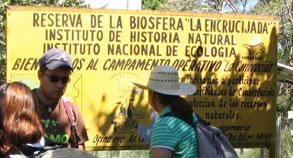
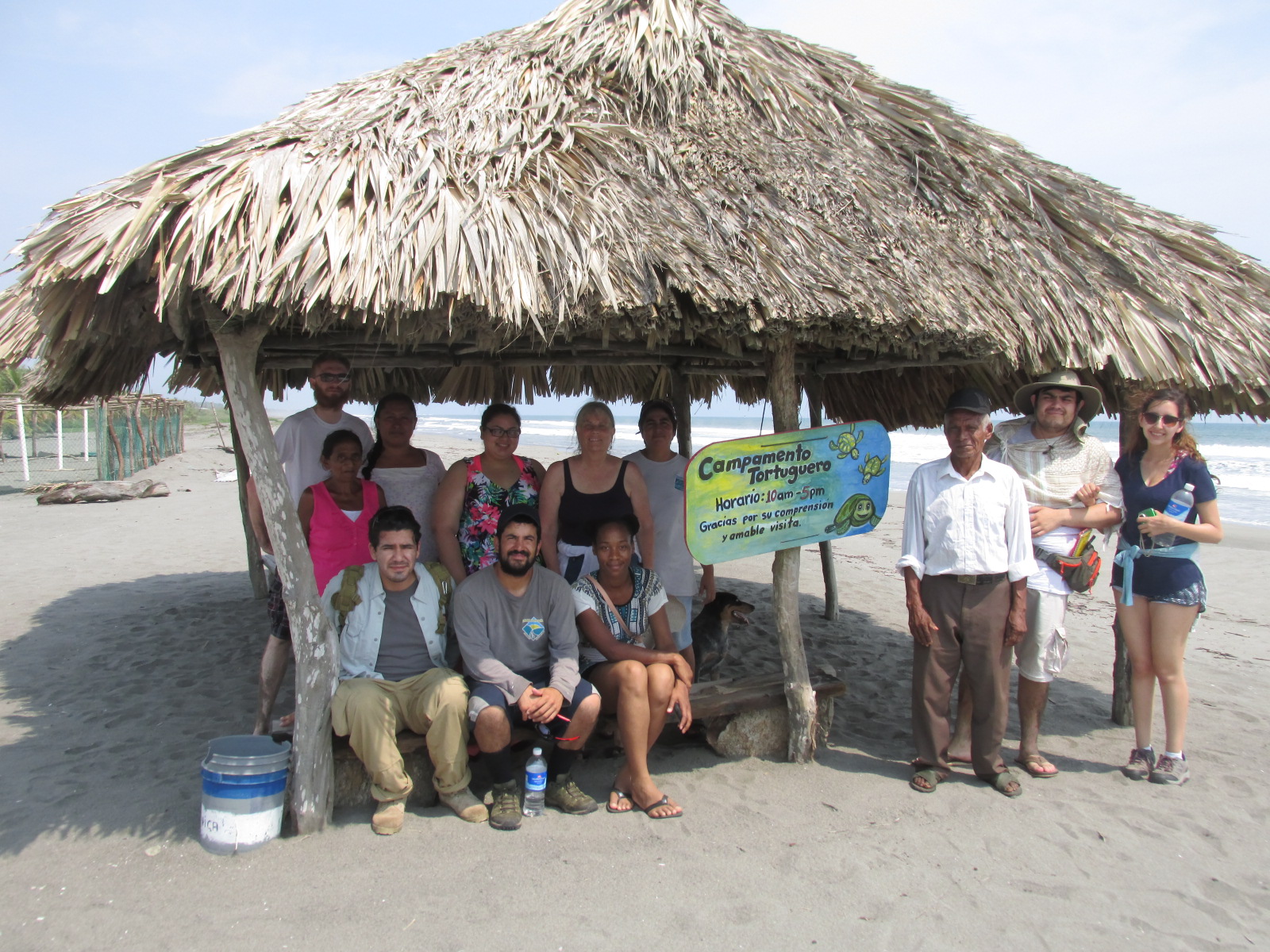
front: Luis Candelario, Octavio Ramirez, Kiva Williams, Mariano Perez, Angel Pinedo, Bianca Borja; rear: Marta Hernández, Robert Husted, Angelica Perez, Adriana Rodriguez, Dr. Gasco and Biologist from the Campamento Tortuguero, La Encrucijada Biosphere (2016)
Visiting the archaeological site of Tonina
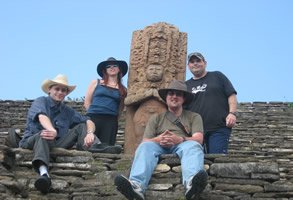
Jeff Lewis, Sara Reimann, Ed Smith & Tommy Kasper at Tonina (08)
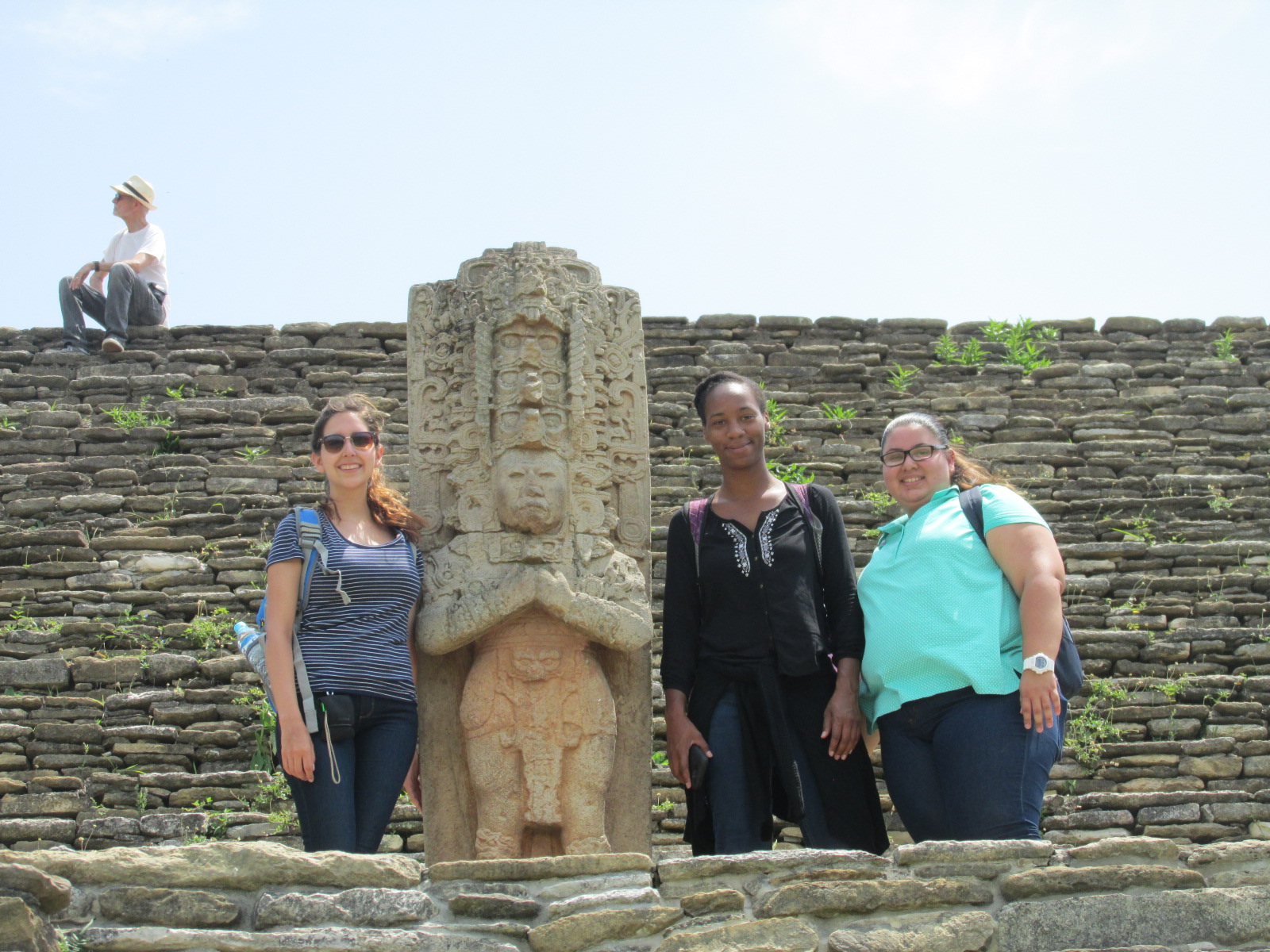
Bianca Borja, Keva Williams, and Adriana Rodriguez, Tonina (2016)
Visiting the archaeological site of Los Horcones, near Tonalá, Chiapas

Archaeologist, Claudia Garcia Des Lauriers explaining iconography on stela at Los horcones
Hiking to the waterfall at El Chicol
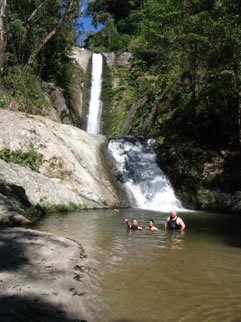
Cesar Rodriguez, Monica Lomeli, and Ruben Bañuelos at waterfall El Chicol (2006)
Visiting the the Museo de la Organización de Medicos Indígenas del Estado de Chiapas (OMIECH) in San Cristobal de las Casas
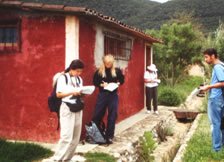
Carole Yokota, Shannon Alves, Judy Clark, Antonio Sanchez at the Museo de OMIECH (2002)

David Ibarra, Mario Castillo, Leslie Estrada, Nick Austin, Lissete Rivera, Museo de OMIECH (2014)
Visiting the Museum of Medicine in Mexico City
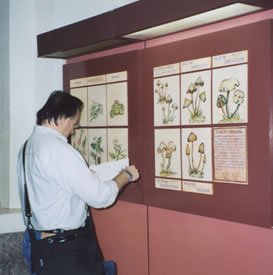
Angel Medina at Museum of Medicine (2004)
Visiting the Musco del Cacao, San Cristobol de las Casas


Having a delicious hot chocolate at the Museo del Cacao, Mario Castillo, LIssete Rivera, David Ibarra, Leslie Estrada, Nick Austin (2014)

